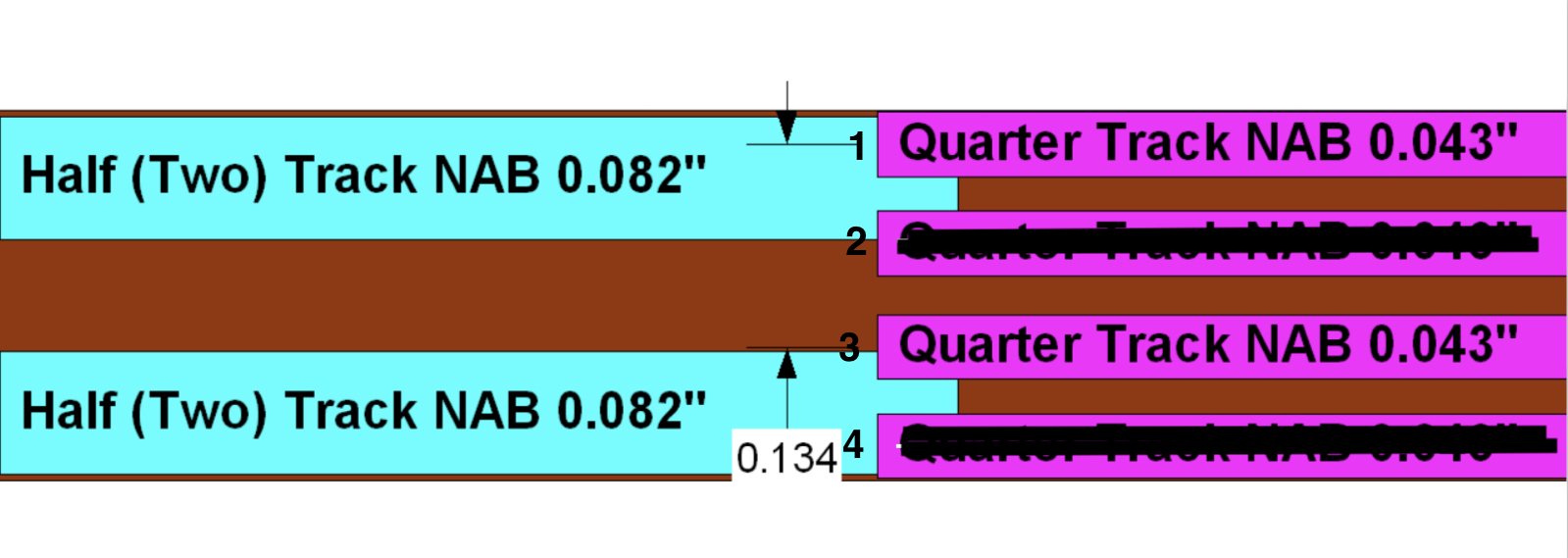I went back and checked out the DSD128 transfers I made of my 4 track tapes. I listened to the quiet intervals between music tracks and cannot detect any crosstalk at all on the random recordings I chose. There is sometimes pre-echo and post-echo, but I cannot hear anything else even with the volume cranked up to painful levels. I must say that I tend to only buy tapes, mostly classical, made from the mid 70s to the early 80s. I think Ampex made a lot of improvement on their tape transfer process along the way.
As for crosstalk on 4 track machines, I recorded a 1kHz signal at -10dB onto the tracks in one direction on brand new 468 tape, flipped it over the played the other two tracks. The right channel measured -58dB and the left -56dB. That means -46dB of track separation, which isn't bad and certainly a lot better than pretty much all phono cartridges.
Of course, one cannot compare these commercial tapes with master tape copies at 2 track/15ips, or even the AP and Tape Project commercial releases. However, most of the 4 track tapes I own were bought at $5 to $30 range, and are much more consistent and in many instances much better than second hand LPs from the same era, most of which have suffered damage over the years. One also has to factor in the cost of the Revox, which cost about $2500 fully refurbished, which is less than what my phono cartridge alone cost. One can of course buy play graded original LPs from people like Tom Port, but would have to pay an arm and a leg. As for streaming, the problem is finding a good transfer. Same with reissue LPs, many of which I find too "hi fi" sounding. Good LP reissues from the likes of AP are not inexpensive either.


